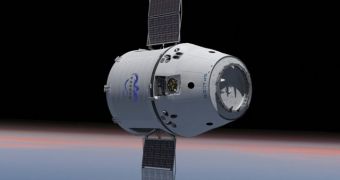Following a recent invitation-only conference held at its own headquarters in Hawthorne, California, and attended by nearly 50 experts from different fields and institutions, the Space Exploration Technologies (SpaceX) company hopes to find enough important customers interested in purchasing their DragonLab reusable capsule. This is a free-flight variant of the Dragon craft which the company plans to use during resupplying missions for the International Space Station.
“It's a commercial mission flying with or without you. There are slots available if you want to come along,” Max Vozoff, SpaceX's Dragon product manager, informed those who participated in the meeting, according to Space. It is known that SpaceX has already found an important customer belonging to the US government for the first flight of the capsule, although Vozoff did not want to disclose its name to the public. Among the other potentially interested institutions are NASA's Goddard Space Flight Center, Jet Propulsion Laboratory, Ames Research Center and Johnson Space Center, but also the U.S. Defense Department.
As its specifications sheet suggests, DragonLab is able to carry up to 6,000 kg (13,227 pounds) of pressurized and unpressurized upmass and up to 3,000 kg (6,613 pounds) of downmass. As to the volume of usable space, the configuration of the capsule so far provides 7 to 10 cubic meters of pressurized space, as well as 14 cubic meters of unpressurized space for nonreturnable payloads. These features make it perfect “for people who have flown or want to fly mid-deck locker experiments,” as Vozoff claims.
DragonLab is scheduled to be launched in 2009 atop a Falcon 9 rocket, also built by SpaceX following the recent success of their Falcon 1 project. The capsule will be recovered upon return from the waters of the Californian coast. As Vozoff says, the missions could take from about a week to almost two years, according to clients' needs. Shorter missions will see the spacecraft take off about twice a year, if all goes according to plans.

 14 DAY TRIAL //
14 DAY TRIAL //